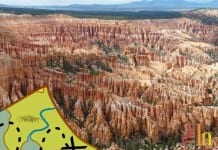The controversial statue removed from the front of Dixie State University is now home. Dixie State University officials have announced that the institution and local artist Jerry Anderson have reached an agreement regarding the future of the “The Rebels” statue, which had been on display on the campus until late 2012.
Talk of changing the name spread to the public and sparked a debate about racism, perceptions by minority students, and public perceptions on a national stage upon gaining university status. With the refusal of locals to abandon the name and mascot at the time, negotiations to merge the University of Utah with Dixie State College were abandoned.
The statue became prominent during the debate over the name when faculty, students, and citizens protested in front of it in 2012. Those opposed to both the name and all symbols tied to the confederate south claimed that changing the name during the transition to university status was the perfect time to start fresh and portray an image not associated with racism.
According to a Salt Lake Tribune review of Dixie year books, “The Confederate flag held a prominent place on campus until it was officially disavowed in 1994, including at college sporting events and in extracurricular clubs. Dubbed The Confederate, the yearbooks also show students occasionally dressing in blackface for spirit events and on homecoming parade floats during the 1960s — and in Halloween costumes as recently as the 1990s. Dorms were named for plantations and the school mascot was a Confederate soldier and its colors were red, white and gray.”
While Dixie State officials chose not to change the name, and said the college name and Dixie regalia did not have anything to do with racism, they had the statue removed out of fear of vandalism.
It appears that there was some question as to whom the statue belonged to. Because the statue was first installed at the Green Valley Mall, then moved to the Dixie Convention Center originally on campus, and then stayed on campus from then on, when it was removed no one was sure who it belonged to.
Questions arose as to whether it belonged the institution, the City of St. George, Washington County, Dixie Convention Center, or the original donors of the artwork to the convention center. Dixie State officials placed the statue in storage until the ownership issue was resolved. It was determined later that month that Dixie State was indeed the legal owner of the statue.
Since then, school officials and the DSU Board of Trustees considered all possible options pertaining to the future of the statue before reaching this agreement with Mr. Anderson.
According to the agreement Anderson is the artistic rights holder and DSU has returned the statue to him. The statue has been delivered to his personal studio in Leeds, Utah. Now everyone who cherishes the history of Dixie can still view it in Leeds. Anderson says, “I invite everyone to please come out to view the statue, take pictures of it, and enjoy it.”
As Dixie officials and locals have dug their heels in and are holding to their history and traditions, it appears that the rebel spirit lives on. And for those who were hoping for a new beginning or an apology from the school for past racism at the college, they may be waiting a long time to come.
 Greta Hyland has a Masters degree in Environmental Policy & Management and has worked for the BLM and the NPS as well as for non-profit organizations. She is a regular contributor to the Utah Adventure Journal and is the Copy Editor at the Independent. She writes regularly on her blog about environmental policy issues affecting the southwest, as well as personal narratives about outdoor recreation and simple living. Her blog can be found at www.thesouthwestjournal.wordpress.com A Utah native, Greta is a consummate desert rat and loves exploring the southwest. She can be reached at [email protected]
Greta Hyland has a Masters degree in Environmental Policy & Management and has worked for the BLM and the NPS as well as for non-profit organizations. She is a regular contributor to the Utah Adventure Journal and is the Copy Editor at the Independent. She writes regularly on her blog about environmental policy issues affecting the southwest, as well as personal narratives about outdoor recreation and simple living. Her blog can be found at www.thesouthwestjournal.wordpress.com A Utah native, Greta is a consummate desert rat and loves exploring the southwest. She can be reached at [email protected]




